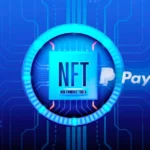The world of non-fungible tokens (NFTs) has taken the digital landscape by storm, revolutionizing the way we own, create, and interact with digital assets. While Ethereum has been the primary blockchain for NFT development, Bitcoin, the world’s oldest and most secure blockchain, is now emerging as a formidable platform for NFTs, introducing a new chapter in the NFT saga.
What are Bitcoin NFTs?
Bitcoin NFTs, also known as Ordinal NFTs, are a type of NFT that is minted directly onto the Bitcoin blockchain. Unlike Ethereum-based NFTs, which rely on smart contracts, Bitcoin NFTs utilize inscriptions, a process of embedding data directly into individual satoshis, the smallest unit of Bitcoin. This unique method of NFT creation leverages Bitcoin’s robust security and immutability, ensuring the permanence and authenticity of Bitcoin NFTs.
The Rise of Bitcoin NFTs
The emergence of Bitcoin NFTs is attributed to several factors. Firstly, the Taproot upgrade in 2022 introduced a new signing algorithm that enabled the inscription of arbitrary data onto the Bitcoin blockchain. Secondly, the development of Ordinal theory and software tools provided a framework for creating and managing Bitcoin NFTs.
Advantages of Bitcoin NFTs
Bitcoin NFTs offer several advantages over their Ethereum counterparts. Firstly, they benefit from Bitcoin’s unparalleled security and immutability, ensuring that NFTs cannot be forged or altered. Secondly, Bitcoin’s vast network of users and liquidity provides a ready market for Bitcoin NFTs. Finally, the low minting fees and fast transaction times on the Bitcoin blockchain make it a cost-effective and efficient platform for NFT creation and trading.
Use Cases of Bitcoin NFTs
Bitcoin NFTs have the potential to revolutionize various industries, including digital art, collectibles, gaming, and intellectual property. Artists can use Bitcoin NFTs to tokenize their creations, ensuring authenticity and provenance, while collectors can acquire unique digital assets with intrinsic value. In the gaming realm, Bitcoin NFTs can represent in-game items, characters, and virtual land, fostering a new era of player ownership and monetization. Additionally, Bitcoin NFTs can be used to represent intellectual property rights, providing a secure and verifiable record of ownership.
The Future of Bitcoin NFTs
The future of Bitcoin NFTs is promising, with the potential to expand into new frontiers and transform digital ownership. As the ecosystem matures, we can expect to see more innovative use cases, improved user experiences, and increased adoption across various industries. Bitcoin NFTs are poised to play a significant role in shaping the future of digital assets and the broader Web3 landscape.
Ordinal NFTs vs other NFTs
Ordinal NFTs and other NFTs, such as those on Ethereum, both represent unique digital assets with ownership rights embedded on a blockchain. However, they differ in several key aspects, including:
Storage Mechanism:
- Ordinal NFTs: Stored directly on the Bitcoin blockchain, leveraging inscriptions to embed data into individual satoshis.
- Other NFTs: Typically store metadata on-chain and reference the actual asset data stored off-chain.
Immutability:
- Ordinal NFTs: Considered highly immutable due to their direct storage on the Bitcoin blockchain.
- Other NFTs: Can potentially be modified or altered if the off-chain data is manipulated.
Security:
- Ordinal NFTs: Benefit from Bitcoin’s robust security and immutability, making them less susceptible to forgery or alteration.
- Other NFTs: Security depends on the underlying blockchain’s security measures and the specific NFT implementation.
Minting Costs:
- Ordinal NFTs: Generally have lower minting fees due to Bitcoin’s more efficient transaction processing.
- Other NFTs: Minting fees can vary depending on the blockchain and network congestion.
Scalability:
- Ordinal NFTs: Face scalability challenges due to Bitcoin’s block size limitations.
- Other NFTs: Blockchains like Ethereum are exploring scaling solutions to address potential congestion issues.
Royalty Support:
- Ordinal NFTs: Currently do not support native royalty mechanisms.
- Other NFTs: Many NFT standards, such as ERC-721, incorporate royalty mechanisms for creators.
Use Cases:
- Ordinal NFTs: Primarily focused on digital art, collectibles, and intellectual property.
- Other NFTs: Have a wider range of use cases, including gaming, virtual worlds, and decentralized applications.
Overall, Ordinal NFTs offer a unique alternative to traditional NFTs, leveraging Bitcoin’s strengths in security and immutability. However, they face challenges in scalability and royalty support, which may limit their adoption in certain use cases. As the Ordinal ecosystem matures, we can expect to see advancements in these areas and a broader range of applications emerge.
Conclusion
Bitcoin NFTs represent a significant advancement in the NFT space, combining the security and immutability of Bitcoin with the transformative potential of NFTs. As the ecosystem continues to grow, Bitcoin NFTs are poised to revolutionize digital ownership, empower creators, and unlock new opportunities in the ever-evolving digital world.












